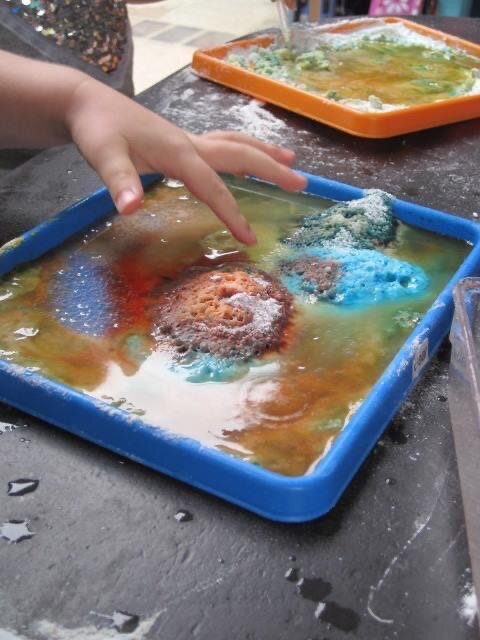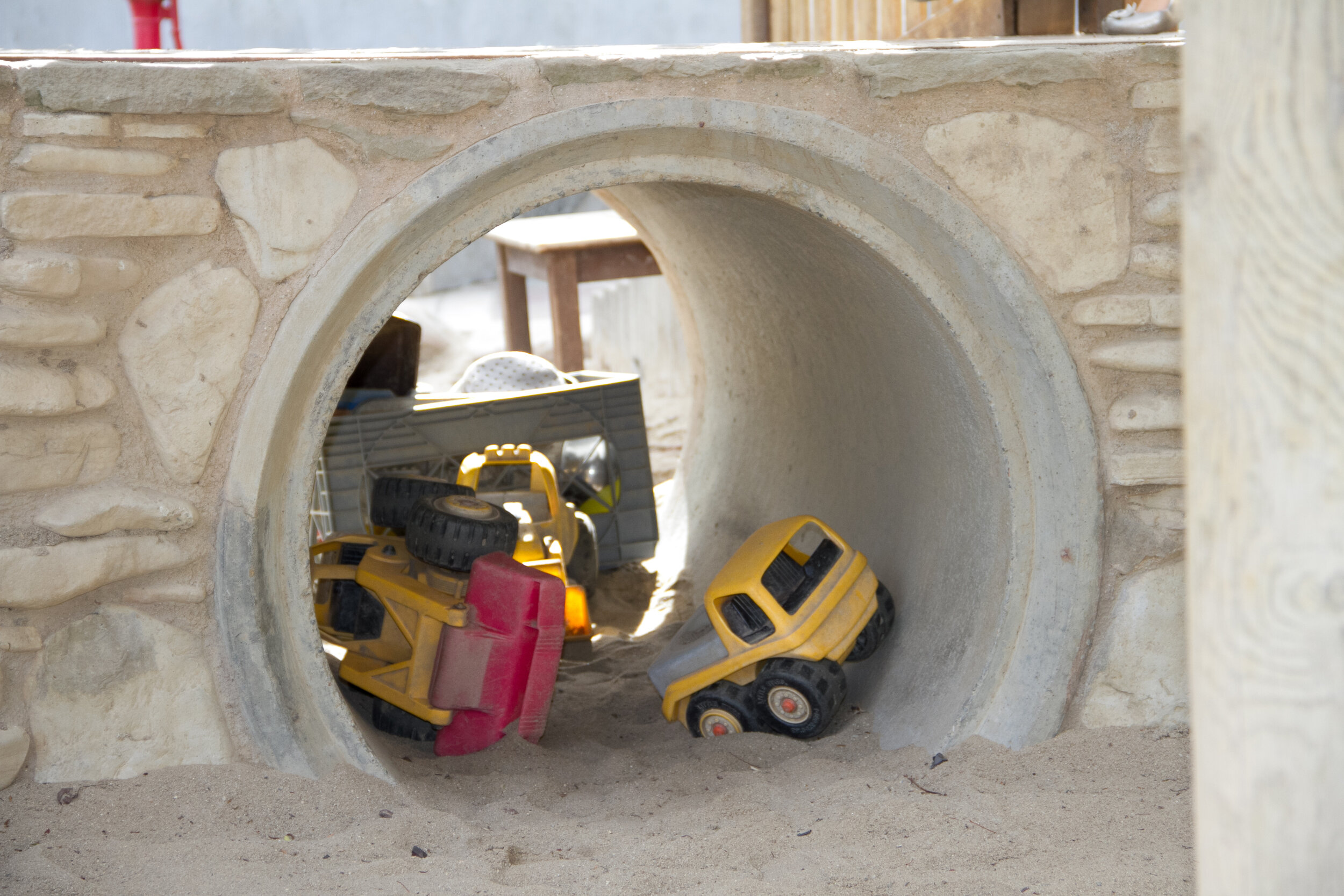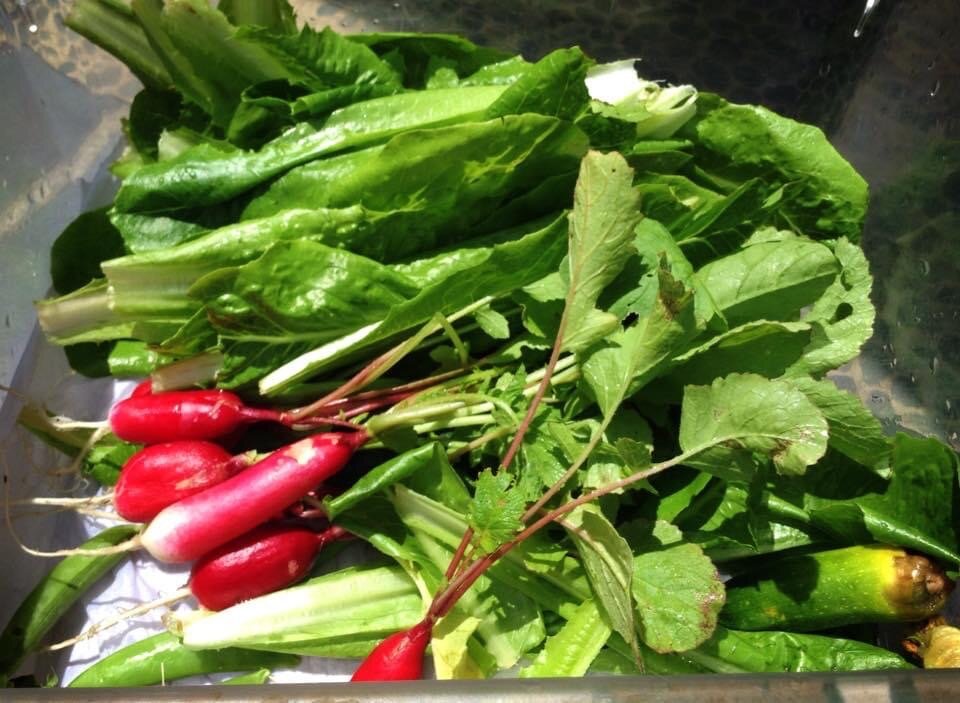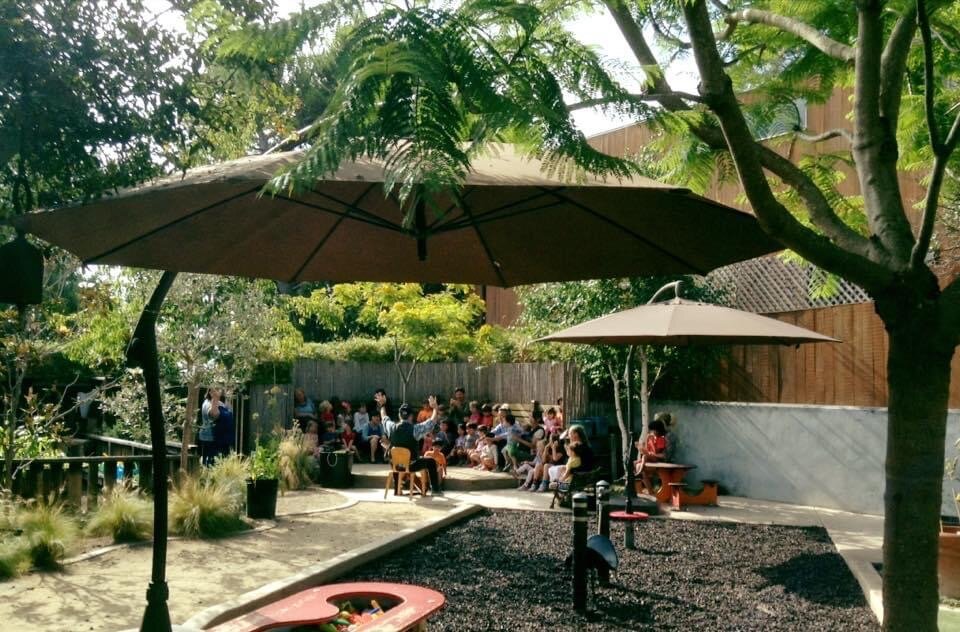Outdoor Classroom
Our natural Outdoor Leaning Environment is designed to stimulate a child’s innate curiosity by working in the garden, natural sandbox and water wall. The planting materials were also chosen to stimulate the child’s senses. For example plants that attract hummingbirds and butterflies stimulate a child’s sense of sight. Lavender plants arouse a child’s sense of smell. Lambs’ Ears and grasses fuel the sense of touch. Children may also choose from a wide variety of activities that exercise fine and gross motor skills, creativity, social/emotional skills and cognition.
Research has shown that the Outdoor Natural Classroom inspires collaboration, reduces violence, bullying and stress for everyone who participates in the garden!
Why Garden?
Gardening offers everything a teacher could want when developing curriculum to draw children into their world. As in other fertile curriculum topics, gardening provides opportunities for children to develop socially and emotionally, individually and as a community. The work involved in gardening supports children’s physical development, nourishes all their senses, and helps them learn to slow down and observe carefully. In addition, the knowledgeable teacher can use gardening as a basis for a full intellectual curriculum, incorporating language and literacy, science and math concepts, social sciences and the arts. Finally gardening offers a unique opportunity for teachers to foster dispositions, or “habits of mind,” such as curiosity, cooperativeness, respect for living things, persistence, and caring, that will serve children well throughout their lives (Katz 1993, 6).
Physical, Social, and Emotional Development
Young children are sensory learners, and gardening calls to all senses. The visual impact of flowers, vegetables, and living creatures pull them into the garden, where they immediately reach out to touch the growing plants. They notice the fragrance of flowers and herbs, hear the grasses rustle in the wind and the hum of the bumblebee as she settles on a coneflower. They pick mint, perhaps tasting the herb perhaps for the first time in its natural state. Later, they harvest vegetables and herbs to use in cooking activities, and maybe try a food for the first time because they grew it themselves.
Gardening is movement and children need to move. They can’t help it. Ask a group of three year olds to sit still, then observe how much harder this is for them than running or climbing. We’ve always known that movement helps bodies grow, and now researchers have confirmed that it is also necessary for brain development.
The garden gives children a place to practice both fine and gross motor skills with purpose. Children dig holes to plant seeds or seedlings. They pick up tiny seeds and place them in a hole or broadcast them carefully over a wide space. They collect mulch in wheelbarrows and spread it on the garden, then hold the hose as they sprinkle water over the growing plants. Weeding requires careful selection and removal of unwanted plants. Picking flowers takes skill and practice: pull too hard and the roots come up, cut too high up and there is no stem to put in the vase. Some flowers can be broken off; some need to be cut with scissors. When the children harvest vegetables, they must use just the right amount of pressure in removing the desired part of the plant to avoid damaging the remaining plant.
Social growth occurs when children work in groups in the garden. They learn to listen to each other and share what they know. Because their experiences differ, they learn from each other. They develop social skills as they encounter situations that involve taking turns, compromising, and sharing. Patience and the ability to tolerate delays evolve as children learn that their turn does come when they work cooperatively with others.
Children develop confidence as they work in the garden. They conquer fears as they encounter new creatures in their explorations, examine them, hold them in their hands, and return them to their homes. Even children who don’t like to get dirty are drawn to a session of planting flowers. They dig with trowels and , though they may don gloves or grab the stem of the plant to avoid touching the soil, they participate. The garden is responsive to children with disabilities or to those who are just learning the common language of their school. Many plants take very little skill to grow, and a good teacher can include everyone.
With gardening, teachers can create private spaces for children. Much has been written about the need for children who are in group programs for much of the day to have some privacy. In fact, while teachers occasionally take breaks, children are usually not allowed to leave the classroom. They are often expected to remain with a large group of other people for nine hours a day, or even longer. As adults, we know the importance of building in time to be alone, to think, to observe from a distance. Garden spaces can give children this opportunity. Teachers can build a special structure (such as a trellis house) with this end in mind, or plant so that small, protective spaces are left. Whether the space is under a low-hanging tree, behind a bush, between rows of plantings, or within a carefully constructed sunflower house, children will appreciate the joining of solitude with the comfort of natural elements.
From Hollyhocks and Honeybees: Garden Projects for Young Children by Sara Starbuck, Marla Olthof, and Karen Midden, Copyright @ 2002 by Sara Starbuck, Marla Olthof, and Karen Midden. Reprinted with permission of Redleaf Press, St. Paul, MN; www.redleafpress.org








